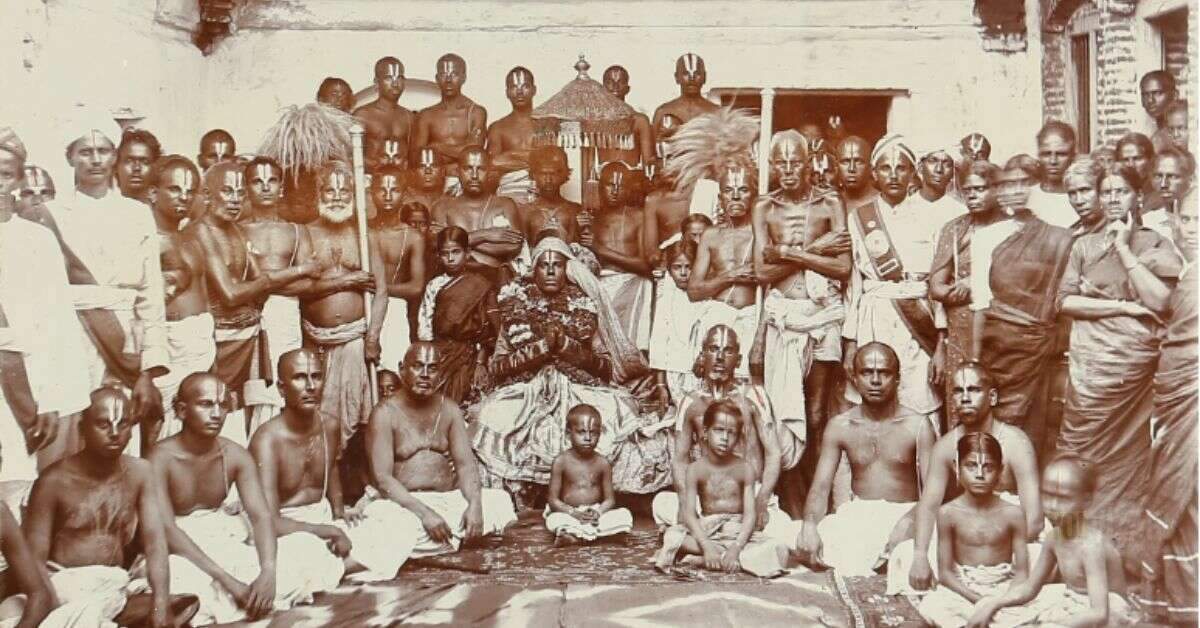

A group of people from Bheemunipatnam in 1880 Credits: Merepix.com
Bheemili or Bheemunipatnam, surrounded by the vast sea, is a breathtakingly beautiful locality in Visakhapatnam. This town lies at the mouth of the Gosthani River, which flows down from the Eastern Ghats to the Bay of Bengal.
However, did you know that the history of Bheemili is way older than that of Visakhapatnam? Before the advent of Visakhapatnam Port in 1931, Bheemunipatnam was home to the busiest port in the area! Several British shipping firms had set up their offices in this place and were engaged in export and import businesses here.
The history of Bheemili can be traced back to the Kalinga empire. In 261 BC, it was attacked by Emperor Ashoka of the Mauryan Empire during the Kalinga War. However, the Kalinga Empire regained the port town after the downfall of the Mauryans.
Later, Krishnadevaraya, the ruler of the Vijayanagara Empire conquered it during the 16th century. Consequently, the Sultanate of Golconda, Quli Qutub Shah seized control over the region.
Following this, Emperor Aurangzeb of the Mughal Empire defeated the rule of the Nawabs/Qutub Shahi dynasty and became the unchallenged ruler of the Deccan region. However, after his death, Dutch businessmen gained entry into Bheemunipatnam.
Bheemili was a significant port during the 17th century. However, the coastline between Kalingapatnam and Bheemunipatnam was considered dangerous, which made the place inhospitable. The Dutch established their settlement in Bheemunipatnam and built a fort and factory.
Bheemili soon became the principal port for exporting rice to the Ceylon and the Malabar coasts. Daniel Harvart described it as the ‘rice bowl’ of Ceylon and other ports.
Also read- 5 Unmissable spots that make Bheemili your perfect weekend getaway!
The Dutch controlled Bheemunipatnam till 1841 when the British took over through the East India Company. Thus, the town became a part of British rule.
After this, the place continued to be a flourishing port till 1931, exporting sesame seeds and oil, hides and skins, cotton yarn and other important goods. The port lost its importance during the Second World War when the construction of the new Visakhapatnam Port overshadowed it.
Bheemili’s location at the mouth of the Gosthani River is cited as the inhibiting factor for its development as a modern port that eased the burden of Visakhapatnam.
Disclaimer: The information in the article is compiled from the book Visakhapatnam: A Tourist Paradise by G S N Murthy, a senior journalist.
Stay tuned to Yo! Vizag website and Instagram for more heritage-related articles.
This post was last modified on 27/11/2024 11:44 am
Entertainment comes in many forms. It might be in the form of a thrilling video…
Whether you're an early bird or an early grump, it goes without saying that the…
As of today, IndiGo has opened bookings for a brand-new daily flight service connecting Visakhapatnam…
Visakhapatnam is preparing for one of its most spiritually charged and widely attended events, the…
Andhra University (AU) Vice-Chancellor G P Raja Sekhar has issued orders to relieve aided college…
In light of President Droupadi Murmu's scheduled visit to Vizag on 10 June 2025 to…
Leave a Comment